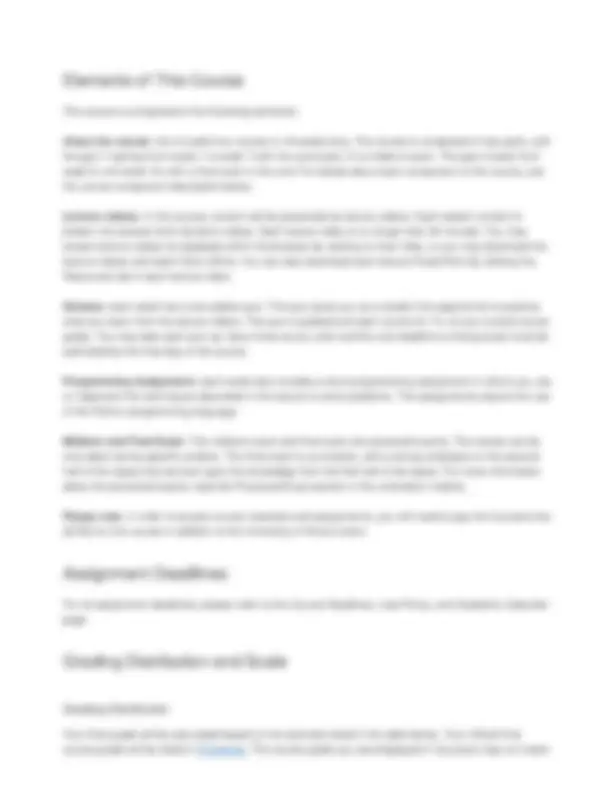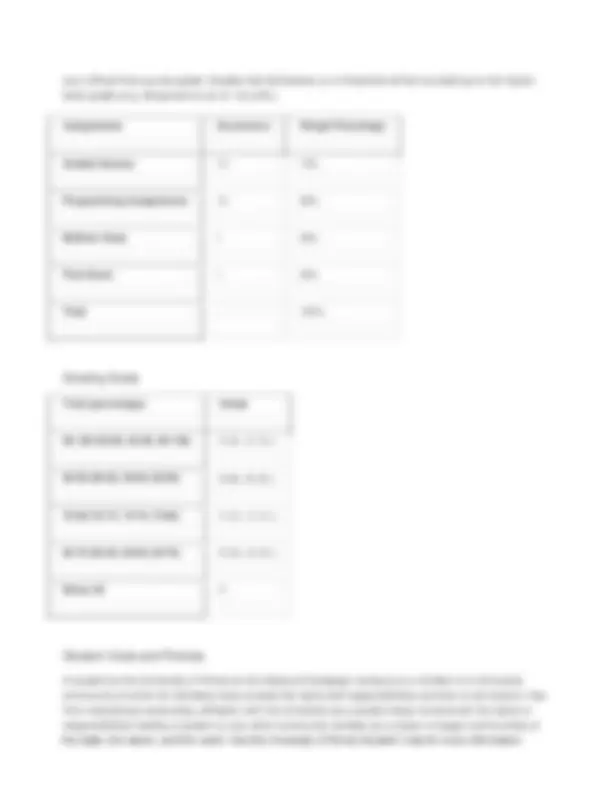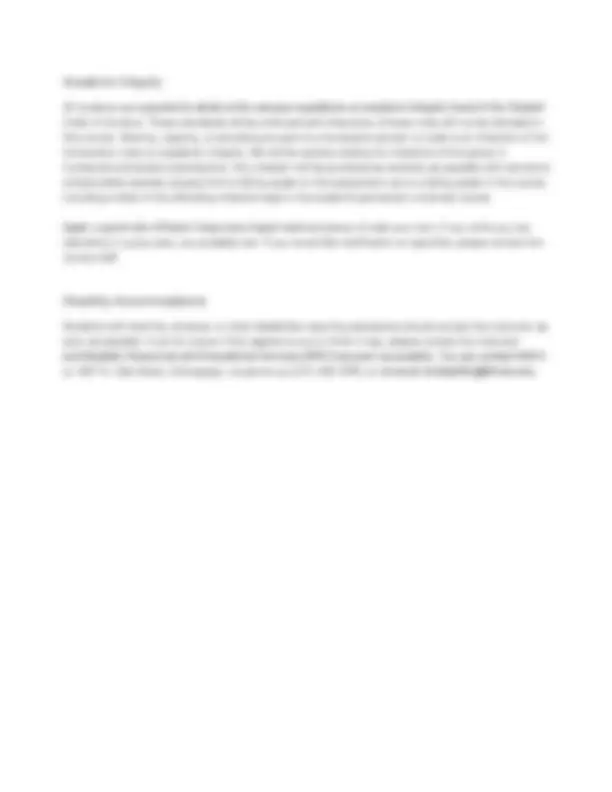





Study with the several resources on Docsity

Earn points by helping other students or get them with a premium plan


Prepare for your exams
Study with the several resources on Docsity

Earn points to download
Earn points by helping other students or get them with a premium plan
Community
Ask the community for help and clear up your study doubts
Discover the best universities in your country according to Docsity users
Free resources
Download our free guides on studying techniques, anxiety management strategies, and thesis advice from Docsity tutors
Second half of course focuses on analytic problems, including numerical integration and differentiation and initial and boundary value problems for differential.
Typology: Lecture notes
1 / 5

This page cannot be seen from the preview
Don't miss anything!




Course Schedule Week Topic (^1) Scientific Computing 2 Systems of Linear Equations 3 Linear Least Squares 4 Eigenvalue Problems 5 Nonlinear Equations 6 Optimization 7 Midterm 8 Interpolation 9 Numerical Integration and Differentiation 10 Spring break, No class 11 Initial Value Problems for Ordinary Differential Equations 12 Boundary Value Problems for Ordinary Differential Equations 13 Partial Differential Equations 14 Fast Fourier Transform 15 Random Numbers and Stochastic Simulation 16 Final
Assignments Occurrence Weight Percentage Graded Quizzes (^13) 13% Programming Assignments 13 26% Midterm Exam 1 26% Final Exam 1 35% Total 100% Grading Scale Total (percentage) Grade 90 - 100 (90-93, 93-96, 96-100) A (A-, A, A+) 80 - 90 (80-83, 83-86, 86-90) B (B-, B, B+) 70 - 80 (70-73, 73-76, 76-80) C (C-, C, C+) 60 - 70 (60-63, 63-66, 66-70) D (D-, D, D+) Below 60 F Student Code and Policies
Academic Integrity
Disability Accommodations